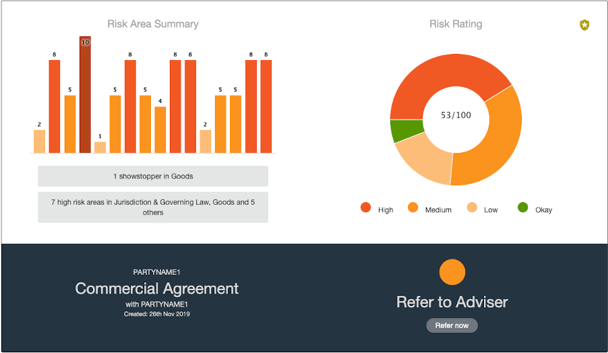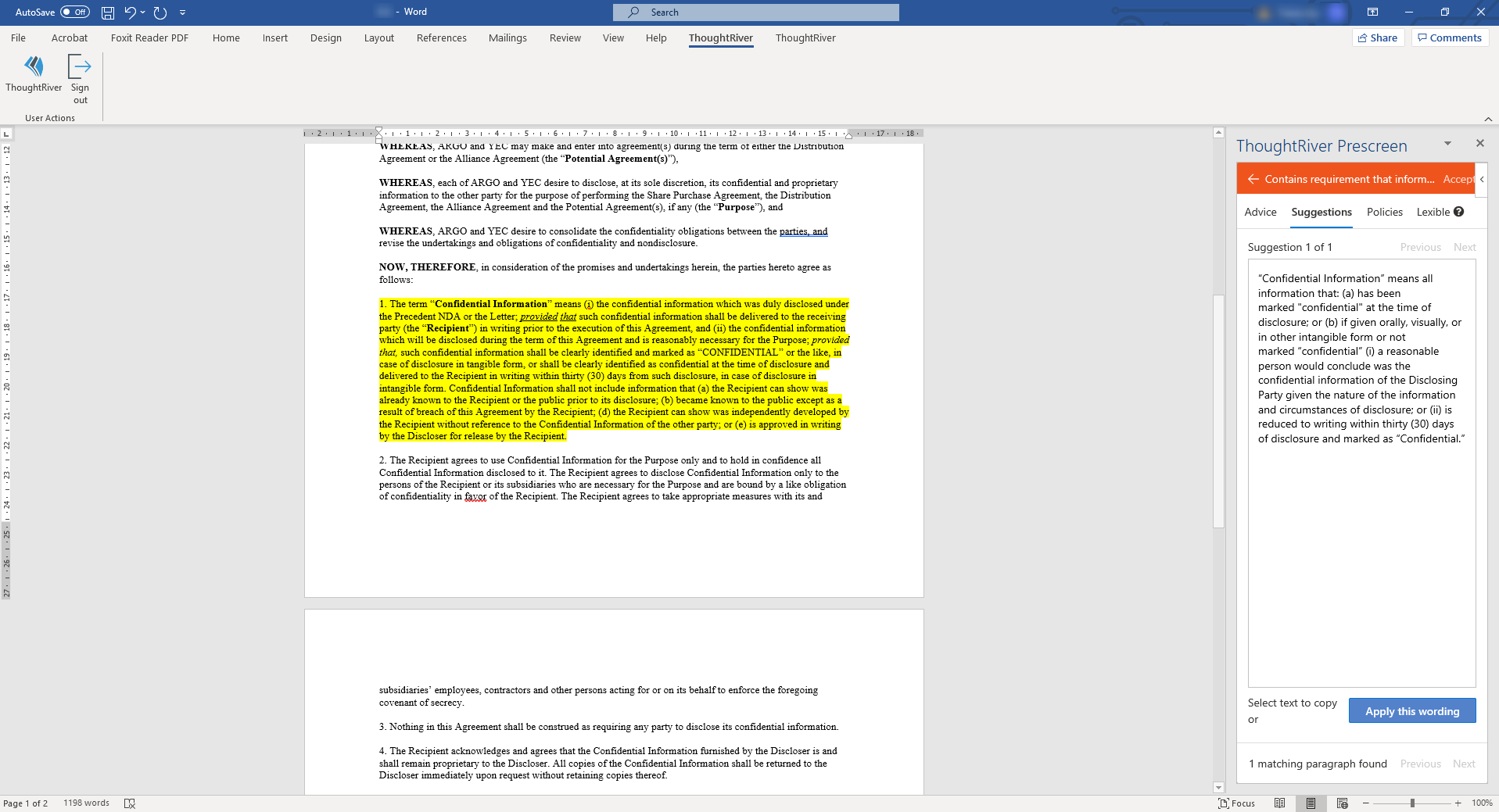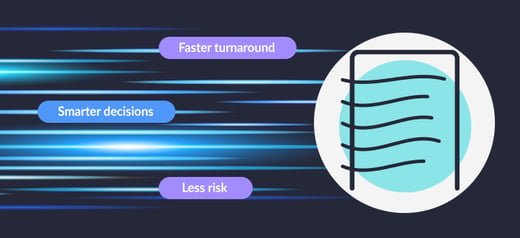To answer that, first, let us look at what the contract review process is and then examine the automation element.
What is contract review?
Contract review is a structured process in which you read and understand a draft contract to ensure what has been agreed commercially is encompassed within and to check for alignment of the terms with your own policies.
Two fundamental skills exist amongst all lawyers today: Reading and Writing. The basics.
Reading: This is typically a manual process in which a lawyer would read through the document, not cover-to-cover as you would a novel, but more like a technical manual where you skip about the document to navigate it for understanding. The problem is: where do you start?
First you might start with an understanding of the contract type, is this a; commercial contract review, an employment contract review, a lease review, etc. Answering that question will help to guide the lawyer as to which terms to focus most time on. The lawyer will then often turn to their contract review process flowchart to further refine which issues to spend most time checking. We refer to this as a commercial contract checklist.
This work is then further complicated by the use of legalese in contracts. There is a set of clauses that you would almost always expect to see in a commercial contract: choice of law, jurisdiction, duration, termination, etc. However the clause language used to describe these standard terms varies greatly from contract to contract and that is the core problem encountered when one reviews a contract. Let us look at an example: the choice of law clause. Our data science team at ThoughtRiver analysed 1.4M contracts from our database to see how many different variations of this relatively mundane clause we could find. This clause, which is present in all commercial contracts, simply states which jurisdiction’s law would govern the contract (England & Wales, New York, etc.) We found a staggering 335,000 variations of the language of that clause within our sample set. Let that sink in for a minute: lawyers have somehow managed to create 335,000 different ways of saying “the law of this contract is X”. Now extrapolate that huge number of variation on one simple clause to the language variation in the rest of the contract involving more complex issues. You simply don’t know whether you need to read a contract, without reading it, so you have to read it all. This is a major reason why so much money is wasted each year on contract review tasks which in turn drives up contract review costs.
Writing: Only once the lawyer has finished their commercial contract checklist, and battled through hours upon hours of legalese to familiarise themselves with the contract, can she then start the real work of contract review: redlining the changes that she wishes to make, and adding comments to the document so that the counterparty may understand their position. Most of us have seen these working documents created using the "track changes" functionality in Microsoft Word, the favourite tool of most lawyers. Most companies have a policy or a playbook of sorts that the lawyer will lean on as she performs this work; the playbook contains the standard language that they prefer to use for the various points of negotiation, and often pre-agreed fallback positions if their standard position is rejected. Another several hours of grind.
The next stage of the process is negotiation when the document is passed back and forth between the two (sometimes more) parties; the idea is that with each iteration, small concessions would be made by both sides to narrow the cap between the two positions, and eventually leading to an agreement. Our clients tell us that a typical negotiation process takes between 5 to 10 iterations. Because each iteration would require careful legal review followed by the actual negotiation, we can easily see why contract review and negotiation is a slow process that drags on deal velocity and slows down sales. This is a problem, and a key reason why automating the contract review process is so important. And that brings us back to the initial question...
What is automated contract review?
Automated contract review is a technology-assisted process in which a lawyer uses software to review and remediate a contract in a fraction of the time she usually takes when performing the same task manually.
Michael Lisowski, former COO of Ascential Plc recently told us, “As a business leader, I don’t really care about legal efficiency, I care about sales and getting more deals done”.
Upon reflection, this statement essentially summarises the reason why using automated contract review to drive deal velocity is a really key endeavour, and this is what we will explore now. So how do you automate the contract review process described above? Technology is now available to read and understand a legal contract and then compare the provisions of that contract against your contracting policies or playbook. Does that sound familiar? ThoughtRiver’s automated contract review platform, for example, works by taking a similar approach to the review as a human lawyer would, it is a 4-stage process:
- Advanced machine learning models and a natural language processing engine first classify the document into the relevant contract type (NDA, SaaS, Services, Lease, etc), then decides which side of the contract our user is on (e.g. buyer or seller, recipient or discloser). The engine then reads and understands the words in that context to paint a clear picture of what is set out in the contract.
- Depending on the document type, hundreds, and sometimes thousands, of questions are asked and then answered by the AI to build up a very granular picture of the various rights and obligations that the contract contains. For example “does the contract mention confidentiality obligations” is initially asked, if that answer were yes, the engine then follows up with “does the contract confer confidentiality obligations upon us?”, "Do we need to return confidential information after us?" etc. Did I mention that these questions are answered automatically by the machine-learning engine from step 1? This Q&A framework is based on our Lexible contract description tree, which seeks to cover all of the specific points of meaning in a contract. That final point of meaning could either be a yes/no answer, a date, a number, a name, or a Country etc.
- Upon completion of the Q&A process, we would now have that granular picture of the rights and obligations conferred. The tool then compares those positions against your company’s policies to determine if they are compliant; it then assigns risk scores to each position based on the company’s view of risk. Each of our clients, for example, has their own bespoke instance of ThoughtRiver that applies their own unique risk perspective and playbook. The result is a truly bespoke review, similar to when their own lawyers had done the work. The risks are grouped into contractual topics to make it easier for the user to navigate across the contract.

- Now that the lawyer can see all of the risks within the contract, her next task would be to remediate the contract by red-lining and adding comments as we have discussed earlier. Automated contract review tools assist at this stage by providing a clause bank of replacement language for the user to insert into the contract to replace risky terms. Sometimes, template comments can also be inserted to explain your position to the counterparty. ThoughtRiver integrates these capabilities within the Microsoft Word environment so that the lawyer does not need to leave their favourite tool, thus allowing the lawyer to stay focused and "in the zone".
Screenshot of MS Word Plug-in.

The final result of this automation is significantly reduced contract review time, hence much less reading and writing is required. Our clients typically see their lawyers and contract managers save between 33% and 66% of their time. Can you imagine how much faster your organisation would move in terms of sales and deal velocity if your legal reviews were all completed in half the time?
There are numerous other benefits of automated contract review technology and they have been explored at length in the linked article. Or, if you prefer to watch an engaging webinar that talks to the 5 benefits of automated contract review, you may learn more in this recording.
You can also book a demo below and have one of our experts talk to you about the various use cases, and then walk you through the platform on a zoom call.



